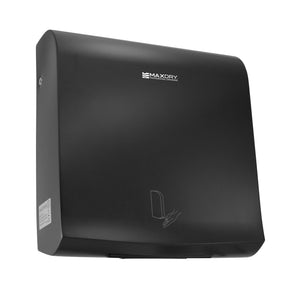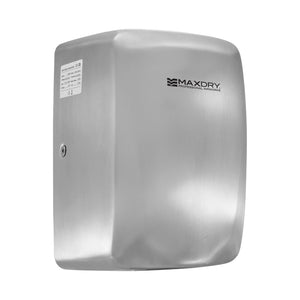Energy-Saving Appliances and Devices
homHave you ever wondered, “How can I make my home more energy-efficient?” Energy efficiency is a lifestyle shift that starts with choosing the right appliances.
In this article, we’ll explore how smart, energy-saving choices can lead to a lighter ecological footprint and a heavier wallet. But before that make sure to check our energy efficiency and sustainability blog to get even more information on how to act more sustainably.
The Most Energy-Efficient Appliances for Your Home
Which devices qualify as eco-friendly home appliances? Eco-friendly home appliances are those that are designed to minimize environmental impact. This includes ENERGY STAR-rated appliances, appliances that use sustainable or recycled materials, and those with features that conserve resources like water and energy.
What is the ENERGY STAR label? It is a widely recognized symbol for energy efficiency, created by the U.S. Environmental Protection Agency (EPA) and the U.S. Department of Energy. It helps consumers identify products, homes, and buildings that save energy and money without sacrificing performance. Products carrying this label have met strict energy efficiency criteria set by the EPA or the Department of Energy.
So, when looking for energy-efficient appliances, consider buying refrigerators, washing machines, and dishwashers that have the ENERGY STAR label. Why? They can reduce electricity usage without compromising performance. Here’s a list to consider:
-
Refrigerators
Refrigerators are one of the most significant energy consumers in the average home, running continuously to preserve food. Energy-efficient models, particularly those with top-mounted freezers, tend to use less energy than their side-by-side counterparts or those with bottom-mounted freezers.
Why are top-mounted freezer models more efficient?
- Heat Rises: Since heat naturally rises, the refrigerator section at the bottom stays cooler naturally, requiring less energy to maintain its low temperature.
- Separate Compartments: The more frequently used fridge section is at eye level, reducing the need to open the freezer and letting out cold air, which demands energy to cool again.
- Design Simplicity: They often have fewer fancy features, which means fewer components that require power.
When shopping, look for the ENERGY STAR label, which indicates that the refrigerator exceeds government standards for energy efficiency. Some models are up to 10% more efficient than the minimum federal standard.
-
Washing Machines
Washing machines have come a long way in terms of energy conservation, with front-loading models leading the charge.
Benefits of front-loading washing machines:
- Less Water: They use significantly less water than top-loaders - nearly half in some cases - which means less energy to heat that water.
- High Spin Speeds: They extract more water from clothes during the spin cycle, reducing drying time and, consequently, the energy needed to run the dryer.
- Precision: Improved wash cycles cater to different types of clothing, avoiding the overuse of energy for delicate garments that don't need an intensive wash.
-
Dishwashers
Modern dishwashers have made leaps in energy efficiency, especially those with energy-saving wash cycles.
Features of energy-efficient dishwashers:
- Soil Sensors: They can adjust the cycle length and water usage based on how dirty your dishes are.
- Efficient Jets: With advancements in water jet technology, dishwashers can do more with less water.
- Air-Dry Options: By using room temperature air for drying instead of heated drying, they cut down energy use significantly.
Tips for using dishwashers efficiently:
- Run full loads to maximize efficiency.
- Use the eco-mode or energy-saving wash cycles.
- Skip heated drying and let dishes air dry.
Also, consider energy-efficient ovens, dryers with moisture sensors, and HVAC systems designed for minimal energy consumption.
- High-Speed Hand Dryers
In addition to major home appliances, attention to energy efficiency can extend to smaller devices like hand dryers, commonly found in restrooms and commercial spaces. Traditional hand dryers, which rely on heated air to dry hands, can be energy-intensive. However, advancements in technology have led to the development of energy-efficient hand dryers that offer quicker and more sustainable drying solutions.
- Efficient Operation: Energy-efficient hand dryers are designed to operate with optimal energy consumption, reducing the overall environmental impact. They often feature advanced heating elements and air circulation systems to dry hands efficiently.
- Quick Drying Times: One key aspect of energy-efficient hand dryers is their ability to achieve quick drying times. This not only enhances user experience but also contributes to energy savings by minimizing the time the device is in operation.
- Sensor Technology: Many energy-efficient hand dryers incorporate sensor technology to activate the drying process only when hands are detected. This eliminates unnecessary energy consumption when the device is not in use, further enhancing its efficiency.
- Reduced Paper Waste: By opting for energy-efficient hand dryers, establishments can contribute to reducing paper waste associated with traditional paper towel dispensers. This aligns with sustainability goals and promotes a more eco-friendly approach to hand hygiene.
When selecting hand dryers for commercial or residential spaces, look for models that carry energy efficiency certifications or labels. These certifications ensure that the hand dryer meets specific standards for minimizing energy consumption while providing effective hand-drying capabilities.
Cutting Costs with Energy-Saving Devices
Yes, it's true – energy-saving technologies can significantly trim your utility bills. On top of the savings from efficient energy consumption appliances, simple changes can contribute to substantial reductions in energy use. But how do energy-saving devices help reduce utility bills? Let’s see.
Compared to conventional incandescent lights, LED bulbs can last up to 25 times longer. They use about 75% less energy than incandescent lighting, which adds up to considerable savings.
Tailor heating and cooling patterns to your schedule, reducing waste. Some advanced models can learn your preferences and adjust settings automatically for optimized energy use.
Devices turned off but plugged in still draw power. Smart power strips cut power when devices are not in use. Many models can be controlled via smartphone apps, allowing you to turn off power to non-essential devices even when you're away.
Benefits of Using Sustainable Household Devices
Eco-friendly appliances help to reduce your home's impact on the environment. They use less water and electricity and are often made from more sustainable materials.
They're designed to do more with less, conserving natural resources. By using less power, these appliances contribute to lower carbon emissions from power plants.
Incentives for Going Green with Appliances
Governments worldwide are recognizing the importance of energy conservation and are offering various incentives.
Types of Incentives:
- Tax Credits: Get money back on your tax return for qualifying energy-efficient purchases.
- Rebates: Immediate cash-back offers for buying energy-saving appliances.
- Incentive Programs: Special financing, discounts, or utility rate reductions can be available.
The Best Energy-Saving Technologies for Your Home
The best energy-saving technologies for households include solar panels, heat pumps, LED lighting, high-efficiency HVAC systems, and smart home devices like thermostats and energy monitors that optimize energy usage.
Solar panels crown this group, turning your roof into a power generator, fueled by the sun's endless energy. Heat pumps join the rank, ingeniously transferring warmth to or from your home, depending on the season, with astounding efficiency. LED lighting offers a simple yet profound swap, shining brightly for years while sipping electricity.
High-efficiency HVAC systems follow up, boasting superior performance with minimized energy waste. Finally, smart home devices, such as intuitive thermostats and real-time energy monitors, provide the intelligence to fine-tune your energy usage, achieving a harmony of comfort and conservation. Together, these technologies represent the zenith of eco-friendly home innovation.
Selecting the Right Energy-Saving Appliances
It's crucial to choose appliances that match your specific needs while conserving energy.
- Size Matters: Ensure the appliance is appropriately sized for your home to avoid energy waste.
- Read the Label: Understand the energy consumption details provided on the ENERGY STAR label.
- Consider the Features: More features might mean more power consumption. Balance needs with efficiency.
Choosing sustainable devices means participating in a global effort towards a more sustainable future. Reducing energy use helps to preserve ecosystems and biodiversity.
Social Responsibility: By choosing sustainable options, you're setting an example for others to follow. By embracing energy-saving devices and eco-friendly appliances, you're not just cutting costs but also contributing to a healthier planet. The government incentives available can make the switch more affordable, while the long-term savings and environmental benefits make it a wise investment. Remember, the greenest power is the power you don't use.
How do Energy-Efficient Home Upgrades Impact the Environment?
Energy-efficient home upgrades reduce the demand for energy, which can lead to a decrease in greenhouse gas emissions from power plants. They also conserve natural resources and can reduce water usage and waste, contributing to a healthier environment.
Energy-saving appliances and devices not only lessen the burden on your wallet but also reduce your ecological footprint. From refrigerators to solar panels, the options are plentiful and the benefits, both immediate and long-term, are substantial. Isn’t it time to make the switch and light up your home with the power of efficiency?
Related Products
-
ThinMAX High Speed Hand Dryer - Black Coated Stainless Steel

- Regular price
- $427.60
- Sale price
- $427.60
-
SpaceMAX High-Speed Vertical Hand Dryer, Brushed Stainless Steel (Satin)

- Regular price
- $279.50
- Sale price
- $279.50



